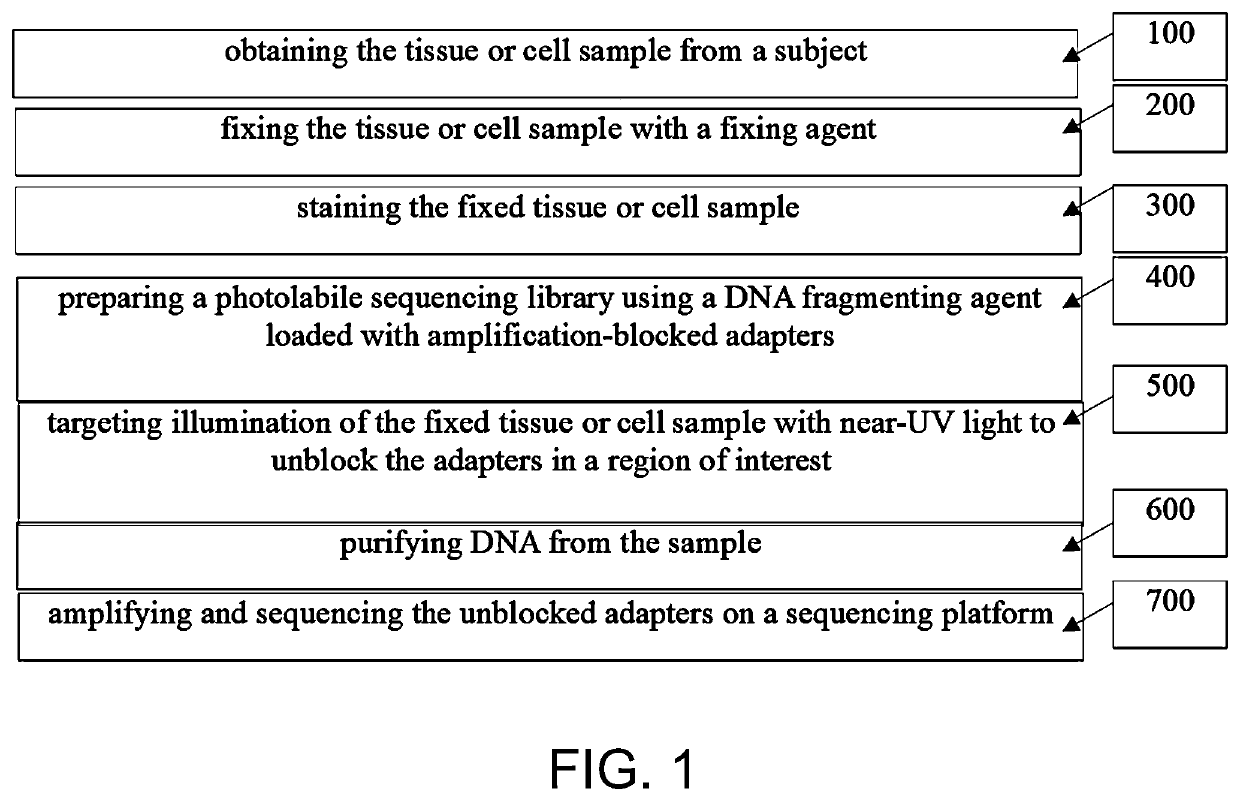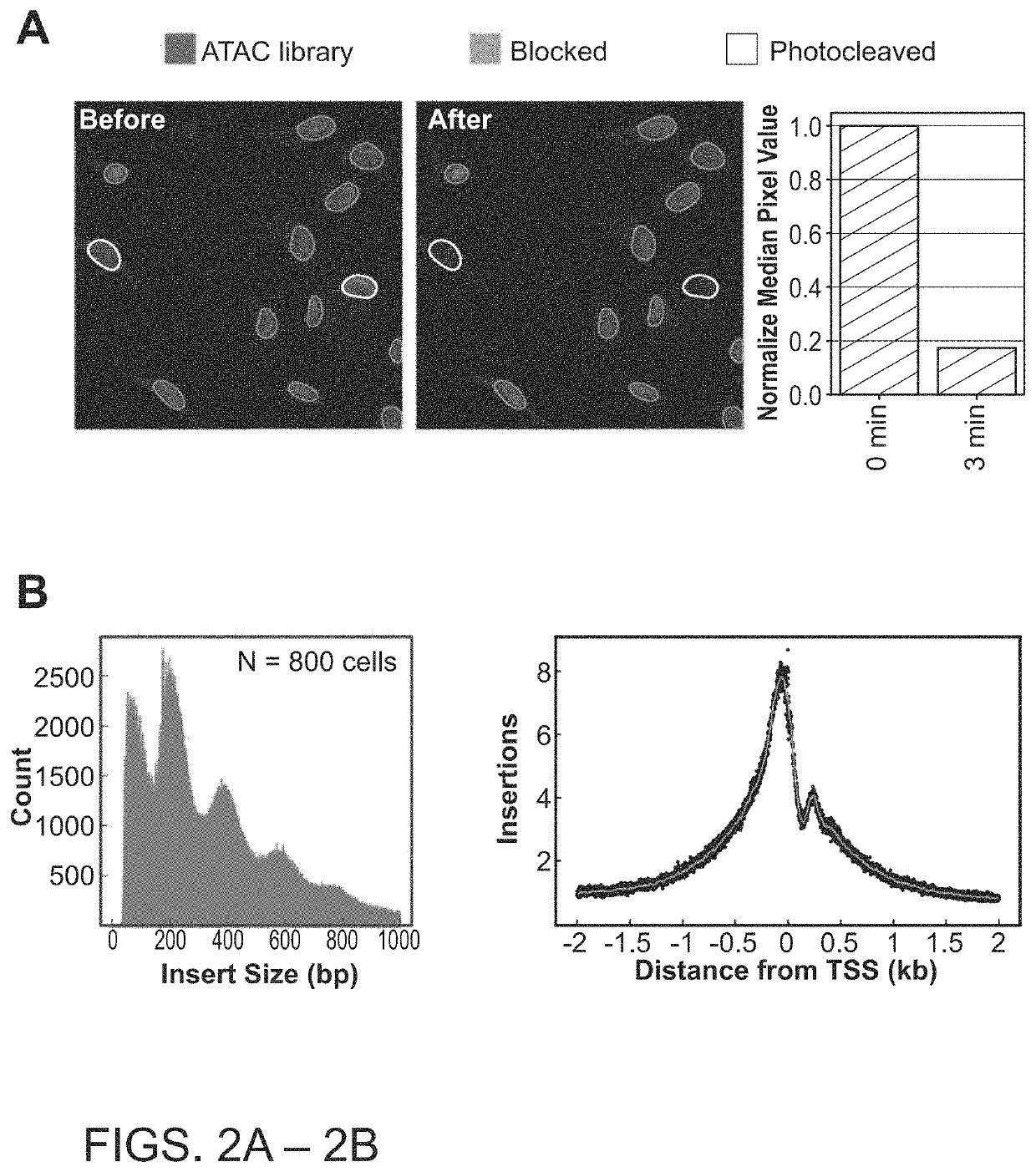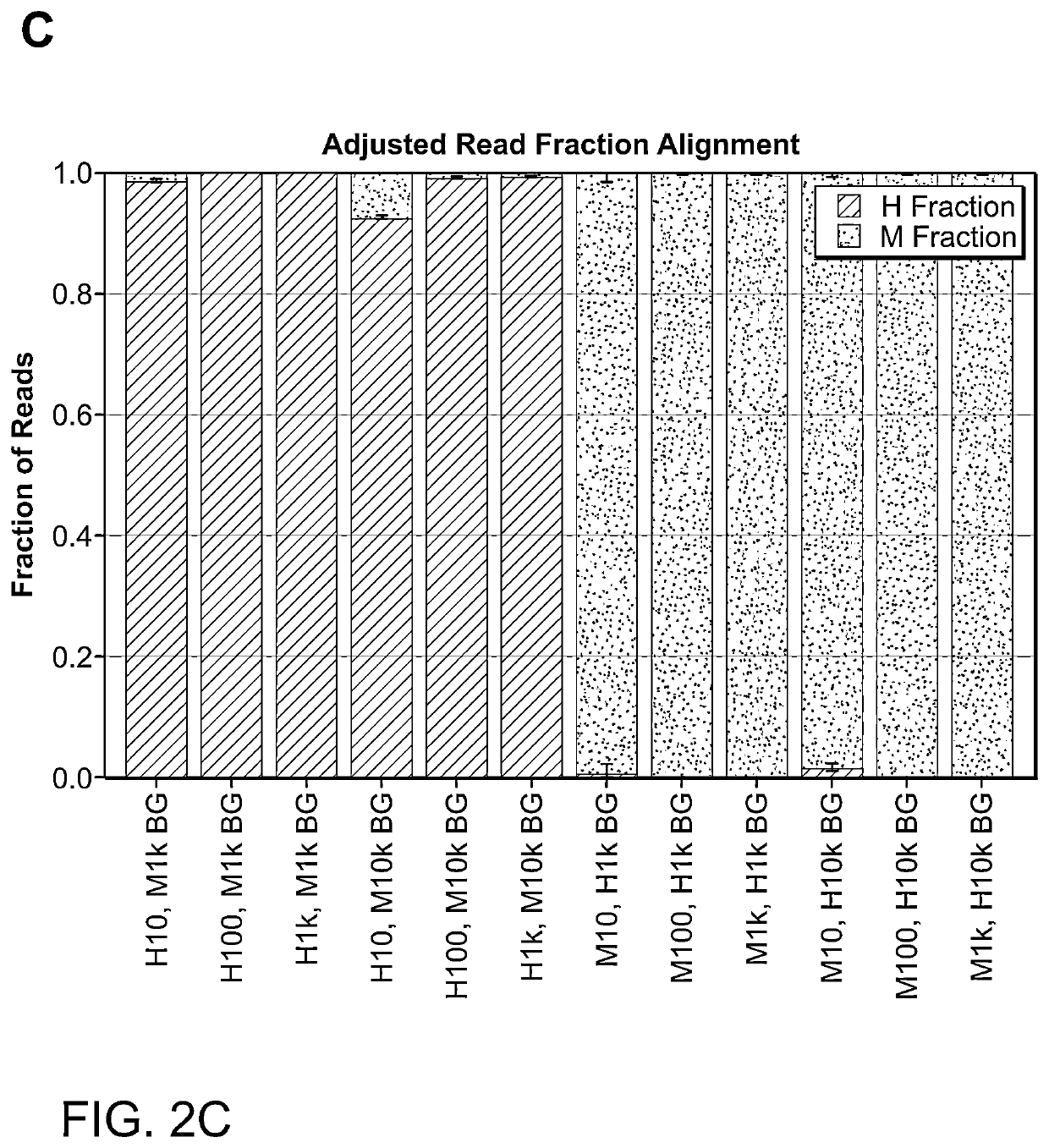Photoselective non-invasive targeted genomic and epigenomic sequencing of spatially-defined cells or subcellular regions
a targeted, genomic technology, applied in the direction of hydrolases, microorganism testing/measurement, biochemistry apparatus and processes, etc., can solve the problems of inability to achieve subcellular resolution, insensitive to morphological changes, lack of tractability of dispersed target cells,
- Summary
- Abstract
- Description
- Claims
- Application Information
AI Technical Summary
Benefits of technology
Problems solved by technology
Method used
Image
Examples
example 1
ctive Sequencing Provides Spatially Targeted Sequence Data
[0163]The techniques herein provide photoselective sequencing, a sequencing methodology that enables non-invasive targeted genomic and epigenomic sequencing of spatially-defined cellular or subcellular regions of tissues or cell populations or cells using light-activated probes. In particular, the disclosure provides in-situ tagmentation with blocked adapters consisting of an oligonucleotide sequence conjugated to a fluorophore via a photocleavable spacer. Photo-induced cleavage of the spacer removes the fluorophore and uncages a 5′ phosphate group that enables ligation of secondary adapters, which are subsequently used to amplify the selected DNA fragments after digestion of the sample. Advantageously, photoselective sequencing provides diffraction-limited resolution and straightforward compatibility with varied genomic and epigenetic sequencing libraries. Additionally, photoselective sequencing is not limited to spatially l...
example 2
and Methods
Sample Protocol for Photoselective Sequencing in Cells and Tissues:
[0168]Unless otherwise specified all steps are carried out at room temperature in a volume of solution that is large enough to completely cover the sample.
[0169]Adherent cells are cultured in an appropriate growth medium and split onto an imaging-compatible dish or slide. For tissues, 10 uM sections of a fresh-frozen sample are collected and placed onto a glass-bottom imaging dish or microscope slide. The tissue is lightly melted onto the glass by touching the underlying glass briefly with one finger.
Fixation and Permeabilization (Cells):
[0170]Cells are rinsed once in 1×PBS, then lightly fixed for 10 minutes at room temperature in 0.4% paraformaldehyde (PFA). Excess PFA is removed from the sample by washing 3 times for 5 minutes each with 1×PBS. Next, cells are permeabilized by incubating in 0.5% Triton X-100 in 1×PBS for 10 minutes at room temperature. The sample is again washed three t...
PUM
| Property | Measurement | Unit |
|---|---|---|
| diameter | aaaaa | aaaaa |
| temperature | aaaaa | aaaaa |
| thickness | aaaaa | aaaaa |
Abstract
Description
Claims
Application Information
 Login to View More
Login to View More - R&D
- Intellectual Property
- Life Sciences
- Materials
- Tech Scout
- Unparalleled Data Quality
- Higher Quality Content
- 60% Fewer Hallucinations
Browse by: Latest US Patents, China's latest patents, Technical Efficacy Thesaurus, Application Domain, Technology Topic, Popular Technical Reports.
© 2025 PatSnap. All rights reserved.Legal|Privacy policy|Modern Slavery Act Transparency Statement|Sitemap|About US| Contact US: help@patsnap.com



